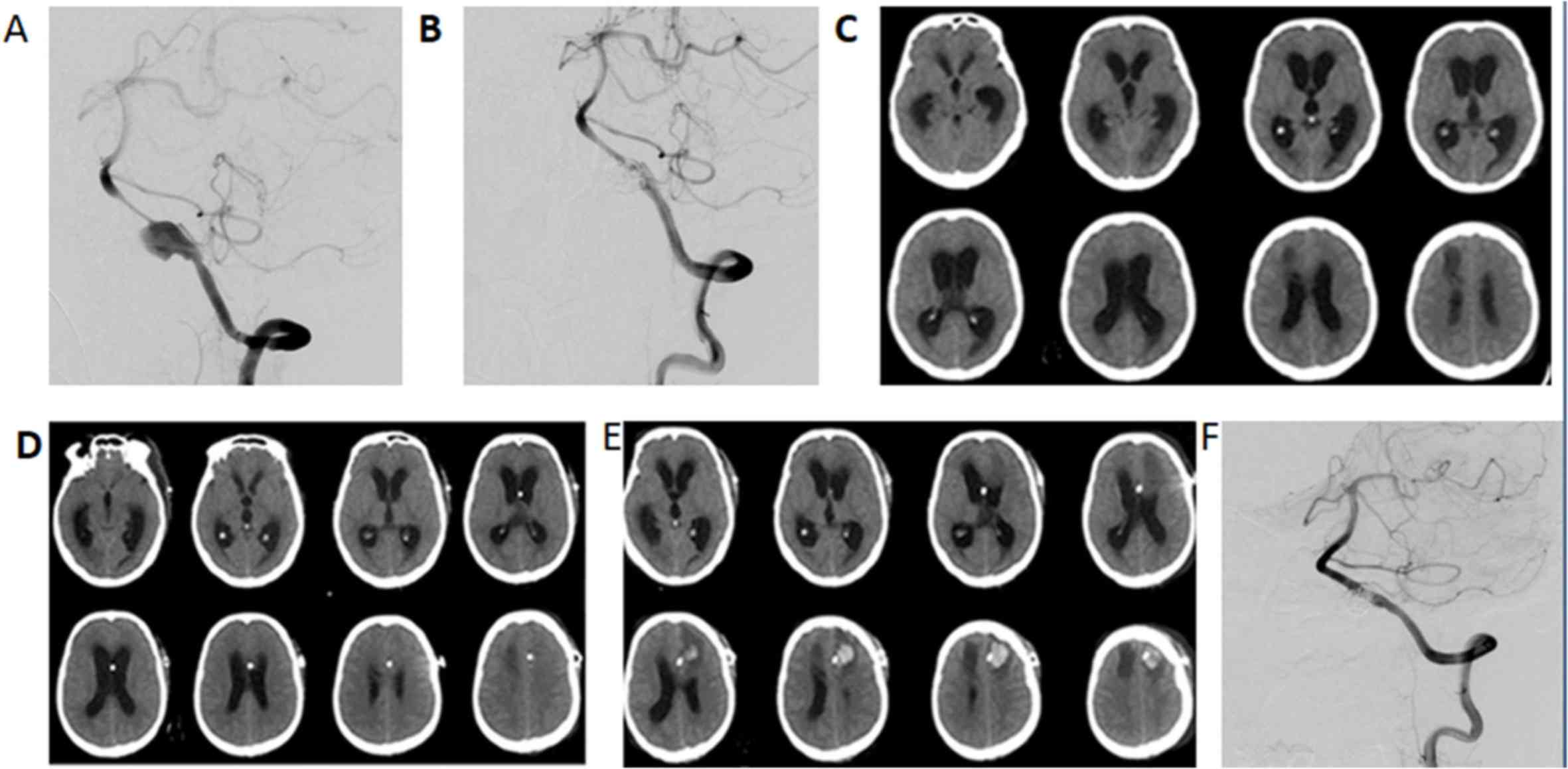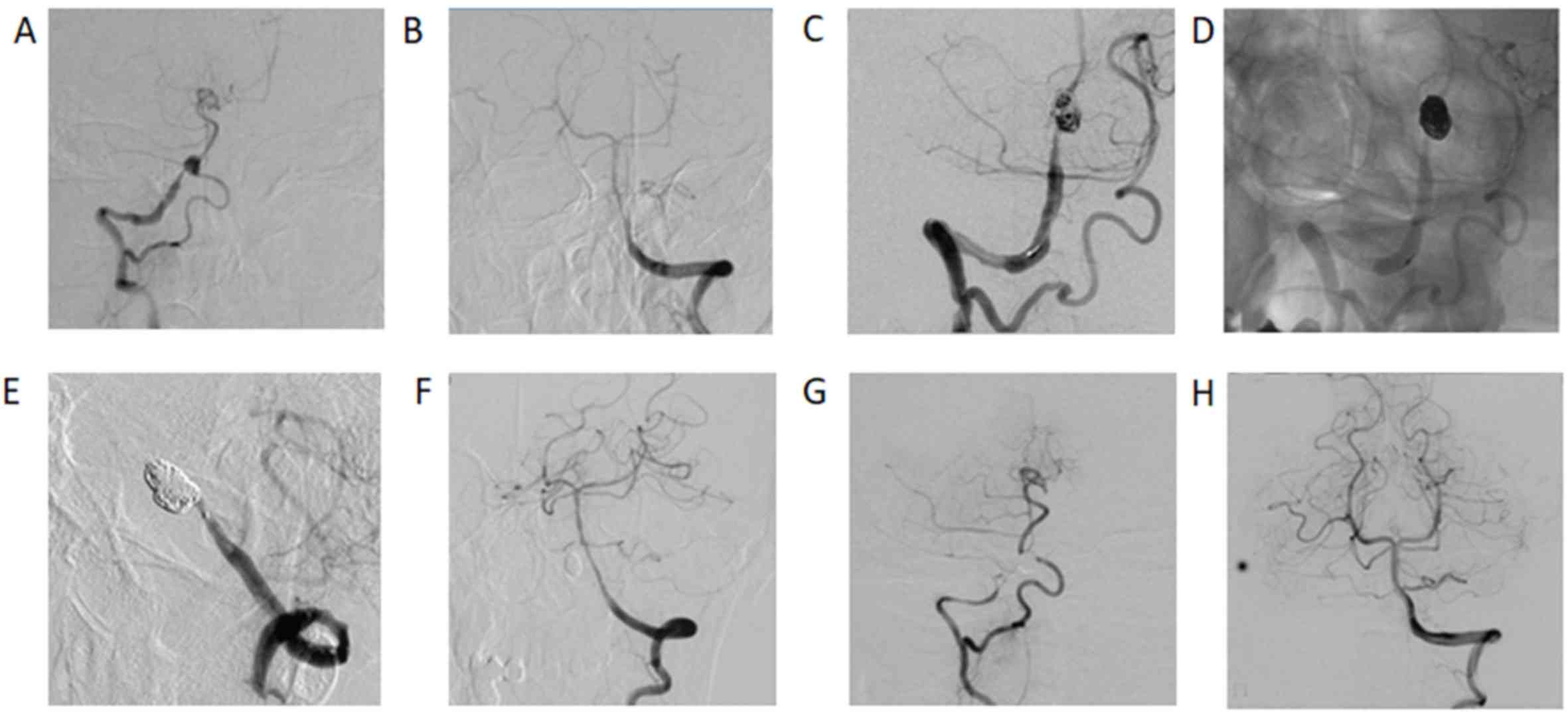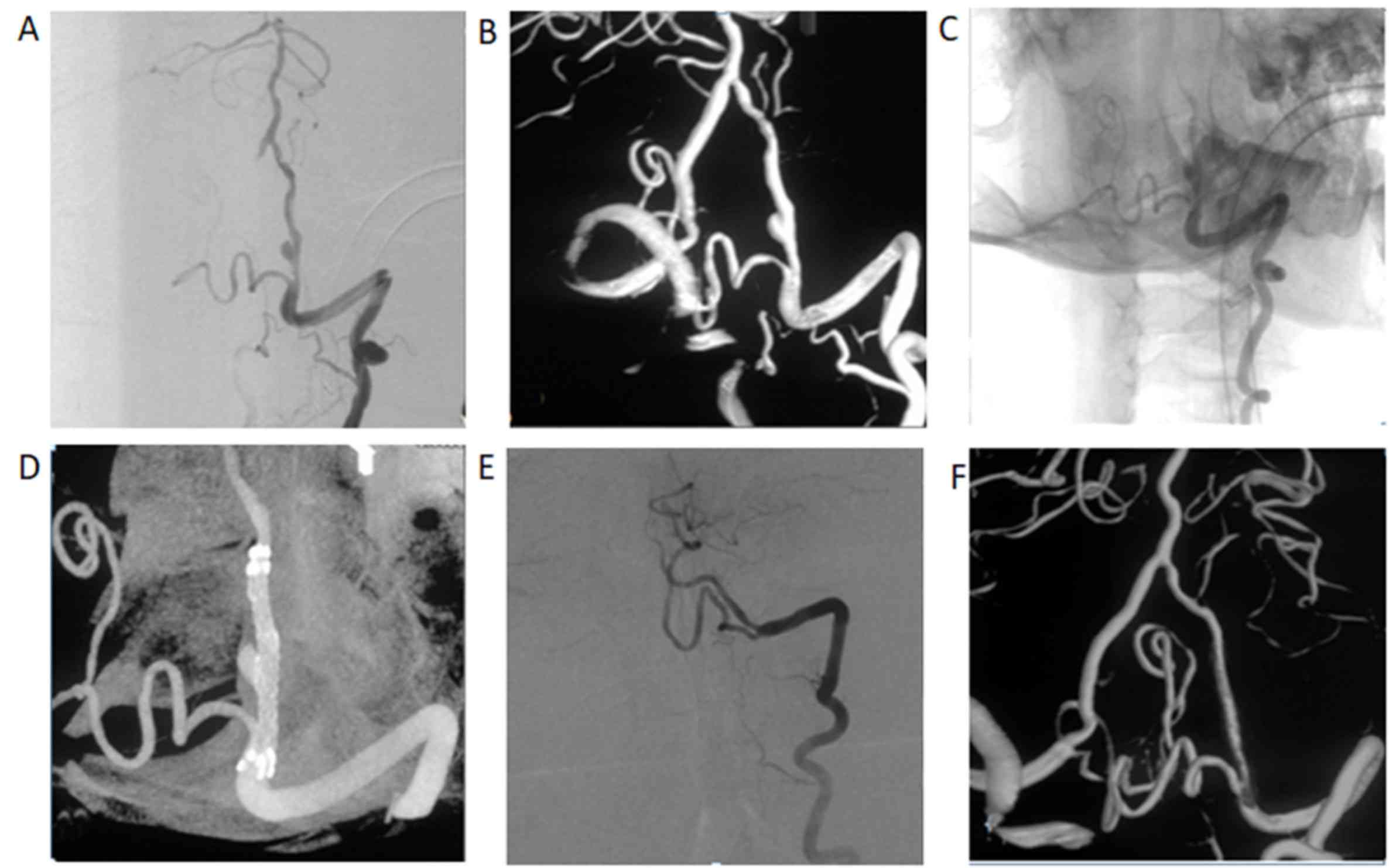|
1
|
Su W, Gou S, Ni S, Li G, Liu Y, Zhu S and
Li X: Management of ruptured and unruptured intracranial vertebral
artery dissecting aneurysms. J Clin Neurosci. 18:1639–1644. 2011.
View Article : Google Scholar : PubMed/NCBI
|
|
2
|
Urasyanandana K, Withayasuk P, Songsaeng
D, Aurboonyawat T, Chankaew E and Churojana A: Ruptured
intracranial vertebral artery dissecting aneurysms: An evaluation
of prognostic factors of treatment outcome. Interv Neuroradio.
23:240–248. 2017. View Article : Google Scholar
|
|
3
|
Madaelil TP, Wallace AN, Chatterjee AN,
Zipfel GJ, Dacey RG Jr, Cross DT III, Moran CJ and Derdeyn CP:
Endovascular parent vessel sacrifice in ruptured dissecting
vertebral and posterior inferior cerebellar artery aneurysms:
Clinical outcomes and review of the literature. J Neurointerv Surg.
8:796–801. 2016. View Article : Google Scholar : PubMed/NCBI
|
|
4
|
Chung Y, Lee SH, Choi SK, Kim BJ, Lee KM
and Kim EJ: Triple stent therapy for the treatment of vertebral
dissecting aneurysms: Efficacy and safety. World Neurosurg.
99:79–88. 2017. View Article : Google Scholar : PubMed/NCBI
|
|
5
|
Zhao KJ, Fang YB, Huang QH, Xu Y, Hong B,
Li Q, Liu JM, Zhao WY and Deng BQ: Reconstructive treatment of
ruptured intracranial spontaneous vertebral artery dissection
aneurysms: Long-term results and predictors of unfavorable
outcomes. PLoS One. 8:e671692013. View Article : Google Scholar : PubMed/NCBI
|
|
6
|
Jin SC, Kwon DH, Choi CG, Ahn JS and Kwun
BD: Endovascular strategies for vertebrobasilar dissecting
aneurysms. AJNR Am J Neuroradiol. 30:1518–1523. 2009. View Article : Google Scholar : PubMed/NCBI
|
|
7
|
Yamada I, Kitahara T, Kurata A, Fujii K
and Miyasaka Y: Intracranial vertebral artery dissection with
subarachnoid hemorrhage: Clinical characteristics and outcomes in
conservatively treated patients. J Neurosurg. 101:25–30. 2004.
View Article : Google Scholar : PubMed/NCBI
|
|
8
|
Mizutani T, Aruga T, Kirino T, Miki Y,
Saito I and Tsuchida T: Recurrent subarachnoid hemorrhage from
untreated ruptured vertebrobasilar dissecting aneurysms.
Neurosurgery. 36:905–923. 1995. View Article : Google Scholar : PubMed/NCBI
|
|
9
|
Arnold M, Bousser M, Fahrni G, Fischer U,
Georgiadis D, Gandjour J, Benninger D, Sturzenegger M, Mattle HP
and Baumgartner RW: Vertebral artery dissection: Presenting
findings and predictors of outcome. Stroke. 37:2499–2503. 2006.
View Article : Google Scholar : PubMed/NCBI
|
|
10
|
Guan J, Li G, Kong X, He C, Long J, Qin H,
Zhang H and Wang R: Endovascular treatment for ruptured and
unruptured vertebral artery dissecting aneurysms: A meta-analysis.
J Neurointerv Surg. 9:558–563. 2017. View Article : Google Scholar : PubMed/NCBI
|
|
11
|
Naito I, Iwai T and Sasaki T: Management
of intracranial vertebral artery dissections initially presenting
without subarachnoid hemorrhage. Neurosurgery. 51:937–938. 2002.
View Article : Google Scholar
|
|
12
|
Czabanka M, Ali M, Schmiedek P, Vajkoczy P
and Lawton MT: Vertebral artery-posterior inferior cerebellar
artery bypass using a radial artery graft for hemorrhagic
dissecting vertebral artery aneurysms: Surgical technique and
report of 2 cases. J Neurosurg. 114:1074–1079. 2011. View Article : Google Scholar : PubMed/NCBI
|
|
13
|
Park W, Ahn JS, Park JC, Kwun BD and Kim
CJ: Occipital artery-posterior inferior cerebellar artery bypass
for the treatment of aneurysms arising from the vertebral artery
and its branches. World Neurosurg. 82:714–721. 2014. View Article : Google Scholar : PubMed/NCBI
|
|
14
|
Han J, Lim DJ, Ha SK, Choi JI, Jin SW and
Kim CJ: Endovascular treatment of symptomatic vertebral artery
dissecting aneurysms. J Cerebrovasc Endovasc Neurosurg. 18:201–207.
2016. View Article : Google Scholar : PubMed/NCBI
|
|
15
|
Narata AP, Yilmaz H, Schaller K, Lovblad
KO and Pereira VM: Flow-diverting stent for ruptured intracranial
dissecting aneurysm of vertebral artery. Neurosurgery. 70:982–989.
2012. View Article : Google Scholar : PubMed/NCBI
|
|
16
|
Bechan RS, Sprengers ME, Majoie CB, Peluso
JP, Sluzewski M and van Rooij WJ: Stent-Assisted coil embolization
of intracranial aneurysms: Complications in acutely ruptured versus
unruptured aneurysms. AJNR Am J Neuroradiol. 37:502–507. 2016.
View Article : Google Scholar : PubMed/NCBI
|

















